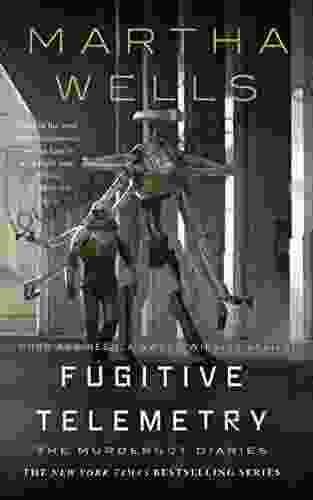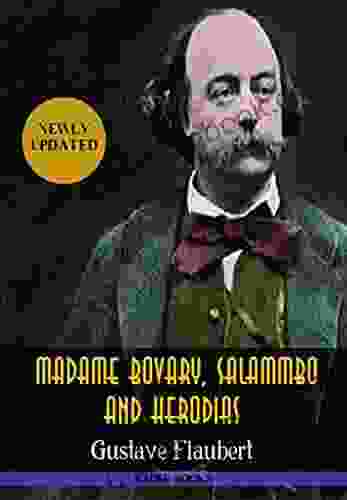Teaching History to Students of Color: A Critical Approach to Uncover the Hidden Narratives

History education plays a crucial role in shaping the identities, perspectives, and aspirations of students. For students of color, however, traditional history curricula often fail to fully represent their experiences and contributions. These students are often taught a whitewashed version of history that marginalizes their stories and perpetuates harmful stereotypes. As a result, they may struggle to see themselves in the historical narrative and may internalize negative messages about their own identity and worth.
This article advocates for a critical approach to teaching history to students of color. By critically examining historical sources, challenging dominant narratives, and incorporating diverse perspectives, educators can create a more inclusive and empowering learning environment. This approach can help students of color develop a more nuanced understanding of history, recognize their own agency, and envision a more just and equitable future.
The Importance of Representation
Representation matters. When students of color see themselves reflected in the curriculum, they feel a sense of belonging and validation. They are more likely to engage with the material and to see history as relevant to their own lives. Representation also challenges harmful stereotypes and allows students to see themselves as agents of historical change.
5 out of 5
| Language | : | English |
| File size | : | 610 KB |
| Text-to-Speech | : | Enabled |
| Screen Reader | : | Supported |
| Enhanced typesetting | : | Enabled |
| Word Wise | : | Enabled |
| Print length | : | 173 pages |
In traditional history curricula, the experiences and contributions of people of color are often marginalized or ignored. This sends the message that these experiences and contributions are not valued. By incorporating diverse perspectives into the curriculum, educators can demonstrate that the history of the United States is not simply the story of white people. It is also the story of African Americans, Latinos, Native Americans, Asian Americans, and other groups who have made significant contributions to our nation.
Challenging Dominant Narratives
Traditional history curricula often present a dominant narrative that glorifies the United States and ignores its flaws. This narrative can be harmful to students of color, as it reinforces the idea that the United States is a nation built on freedom and equality for all, when in reality, it has a long history of racism, oppression, and inequality.
Educators can challenge dominant narratives by critically examining historical sources and presenting multiple perspectives. For example, instead of simply teaching about the Civil War as a conflict over slavery, educators can discuss the complex causes of the war, including the economic interests of the North and the South, as well as the role of slavery in the conflict. They can also discuss the experiences of African Americans during the war and the aftermath of the war, including the Reconstruction era.
By challenging dominant narratives, educators can help students of color develop a more nuanced understanding of history and recognize the ways in which the past has shaped the present.
Incorporating Diverse Perspectives
In addition to challenging dominant narratives, educators should also incorporate diverse perspectives into the curriculum. This means including the voices of people from all backgrounds, including women, people of color, LGBTQ+ people, and people with disabilities. By hearing from a variety of voices, students can develop a more comprehensive understanding of history and see the world from multiple perspectives.
For example, when teaching about the American Revolution, educators can include the perspectives of women, African Americans, and Native Americans. This will help students to see the American Revolution as a more complex event that involved a variety of different groups of people with different interests and motivations.
Empowering Students of Color
A critical approach to teaching history can help empower students of color. By learning about their own history and the contributions of their ancestors, students can develop a sense of pride and self-worth. They can also learn from the mistakes of the past and work to create a more just and equitable future.
For example, when students of color learn about the civil rights movement, they can learn about the courage and determination of the people who fought for equality. They can also learn about the many ways in which the civil rights movement has impacted our country and the world. This knowledge can inspire students to become advocates for change and to work to create a better world.
Teaching history to students of color is a complex and challenging task. However, by adopting a critical approach, educators can create a more inclusive and empowering learning environment. By critically examining historical sources, challenging dominant narratives, and incorporating diverse perspectives, educators can help students of color develop a more nuanced understanding of history, recognize their own agency, and envision a more just and equitable future.
5 out of 5
| Language | : | English |
| File size | : | 610 KB |
| Text-to-Speech | : | Enabled |
| Screen Reader | : | Supported |
| Enhanced typesetting | : | Enabled |
| Word Wise | : | Enabled |
| Print length | : | 173 pages |
Do you want to contribute by writing guest posts on this blog?
Please contact us and send us a resume of previous articles that you have written.
 Top Book
Top Book Novel
Novel Fiction
Fiction Nonfiction
Nonfiction Literature
Literature Paperback
Paperback Hardcover
Hardcover E-book
E-book Audiobook
Audiobook Bestseller
Bestseller Classic
Classic Mystery
Mystery Thriller
Thriller Romance
Romance Fantasy
Fantasy Science Fiction
Science Fiction Biography
Biography Memoir
Memoir Autobiography
Autobiography Poetry
Poetry Drama
Drama Historical Fiction
Historical Fiction Self-help
Self-help Young Adult
Young Adult Childrens Books
Childrens Books Graphic Novel
Graphic Novel Anthology
Anthology Series
Series Encyclopedia
Encyclopedia Reference
Reference Guidebook
Guidebook Textbook
Textbook Workbook
Workbook Journal
Journal Diary
Diary Manuscript
Manuscript Folio
Folio Pulp Fiction
Pulp Fiction Short Stories
Short Stories Fairy Tales
Fairy Tales Fables
Fables Mythology
Mythology Philosophy
Philosophy Religion
Religion Spirituality
Spirituality Essays
Essays Critique
Critique Commentary
Commentary Glossary
Glossary Bibliography
Bibliography Index
Index Table of Contents
Table of Contents Preface
Preface Introduction
Introduction Foreword
Foreword Afterword
Afterword Appendices
Appendices Annotations
Annotations Footnotes
Footnotes Epilogue
Epilogue Prologue
Prologue Christopher Kimball
Christopher Kimball Amy Tangerine
Amy Tangerine Susan Niermeyer
Susan Niermeyer S Green
S Green Rainbow Mosho
Rainbow Mosho Colin Dodds
Colin Dodds Dr Rumbidzai Nyanhoto
Dr Rumbidzai Nyanhoto Devin Lee
Devin Lee Oliver Taplin
Oliver Taplin Alex Haley
Alex Haley S Bowen
S Bowen Ember Michaels
Ember Michaels Maria Isabel Pita
Maria Isabel Pita Dr Richard M Fleming
Dr Richard M Fleming Brian Mcgilloway
Brian Mcgilloway E R Yescombe
E R Yescombe Erika Renee Land
Erika Renee Land Katsuo Yamazaki
Katsuo Yamazaki Maryann Gillespie
Maryann Gillespie Sid Oates
Sid Oates
Light bulbAdvertise smarter! Our strategic ad space ensures maximum exposure. Reserve your spot today!
 Jamison CoxFollow ·8k
Jamison CoxFollow ·8k Ervin BellFollow ·2k
Ervin BellFollow ·2k Charlie ScottFollow ·10.1k
Charlie ScottFollow ·10.1k Christian BarnesFollow ·18.5k
Christian BarnesFollow ·18.5k Ian MitchellFollow ·11.7k
Ian MitchellFollow ·11.7k Alvin BellFollow ·7.2k
Alvin BellFollow ·7.2k Gage HayesFollow ·18.4k
Gage HayesFollow ·18.4k Fletcher MitchellFollow ·5k
Fletcher MitchellFollow ·5k

 Alexandre Dumas
Alexandre DumasFugitive Telemetry: Unraveling the Secrets of the...
In the realm of...

 Caleb Carter
Caleb CarterBlack Clover Vol 25: Humans and Evil - A Journey into the...
Unveiling the Sinister Forces Black...

 Israel Bell
Israel BellHow to Make Offers So Good People Feel Stupid Saying No
In today's competitive business environment,...

 Simon Mitchell
Simon MitchellWrath of Hades: The Children of Atlantis
An Epic Tale of...

 Percy Bysshe Shelley
Percy Bysshe ShelleyStrengthen Your Immune System: Fight Off Infections,...
What is the...

 Clark Bell
Clark Bell10 Things I Wish Someone Had Told Me Earlier
As we navigate through life, we accumulate a...
5 out of 5
| Language | : | English |
| File size | : | 610 KB |
| Text-to-Speech | : | Enabled |
| Screen Reader | : | Supported |
| Enhanced typesetting | : | Enabled |
| Word Wise | : | Enabled |
| Print length | : | 173 pages |











